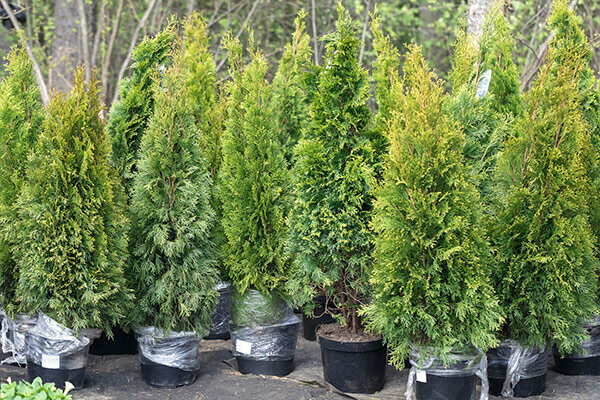5 Tips for Planting a Tree this Spring
With spring in full bloom, many of us are turning our attention to gardening and landscaping. Incorporating new trees into your plans is a wonderful idea! Trees are not only beautiful, but add shade, improve air quality, and enhance your yard’s ecosystem.
However, planting trees properly is a little more complex than simply digging a hole and plopping a sapling into it. While trees become hardy as they grow, they can be fragile when young. This is why you should do as much as you can to ensure it has a good start. Take these tips if you decide to plant a tree on your own.
Start With Picking A Location
- The best location will depend on the species of tree
- Consider checking the soil composition
- Consider the vegetation already growing in your yard
Planting a tree in your yard is one of the most important things you can do to help make your yard healthier, according to the Arbor Day Foundation. Even so, you cannot just plant a tree anywhere. Sometimes location will determine whether your tree thrives or not.
Think about the landscaping in your yard. Make sure all plants and trees have access to enough resources for proper growth and are not in competition with one another. Certain trees will have massive root systems that will take over the ground around them. They can strangle the roots of other plants. At the same time, certain plants can impede the root growth of your trees. From above, trees can shade large sections of your yard and cause plants to lose the sunlight that they desperately need. The best thing you can do is plan enough space for largest predicted size of your chosen tree.
Some other things you may want to consider include buildings, cars, pools, and other hardscaping features.
Plant Early
- Burlapped trees can be planted almost anytime
- Do not plant when it is hot or when there is a threat of drought
- Consider your own life – when will you be around to take care of it?
We all think of spring as the best time to plant trees because it is the time of new growth, but is it really a good time? Yes, if you are early enough. According to Trees Are Good, ” Ideally, trees are planted during the dormant season – in the fall after leaf drop or in early spring before budbreak. Weather conditions are cool and allow plants to establish roots in the new location before spring rains and summer heat stimulate new top growth.”
You also want to consider your own life – when will you have the time to take care of this tree? If you plant it in the spring and then you go to Disney World for a week, you may come back to a tree that is shriveled and limp, or worse, no longer standing.
While spring is the best time for most trees, it is important to look up information about the specific type of tree you plant. If you missed early spring and need to plant into May or June, consider getting a burlapped tree that will have a better chance of survival.
Remember The Roots
- Some trees are better planted bare rooted
- Bare roots will establish themselves much more quickly
- Plant as soon as possible after purchase
Bare rooted trees are the most popular type of trees because they are cheaper, readily available, and establish quickly. You should be able to find a fairly wide selection in your local stores or you can buy online to get trees that your local nurseries may not have. However, it is best to plant as soon as you get these trees, so you want to get them locally if you can.
When planting, ensure that the roots are moist. Planting dry roots can cause rot and won’t allow the tree to be established. You can soak the roots for about an hour in a bucket of tepid water, according to Gardeners. This will help it to have the best chance to survive.
Water Your Newly Planted Trees
- Thoroughly watering all around the tree is important
- You will need to gradually reduce watering
- Pay attention to the weather – don’t water if you’ve had a soaking rain
According to Iowa State University, “The key to watering newly planted balled and burlapped and container-grown trees is to keep the plant’s rootball moist for several weeks after planting. Water newly planted trees every day for 4 or 5 days and then gradually reduce the frequency of watering. When watering, slowly apply water to the rootball and the surrounding soil. A thorough watering every 7 to 14 days (in dry weather) should be sufficient 4 to 5 weeks after planting.”
You will want to keep your new tree watered for a few growing seasons. You can start to let up after year two if you have a smaller tree or year three for a bigger tree. No matter how old your tree is, keeping it watered is imperative to its health.
The act of planting a tree may seem easy, but there are some issues that can arise. You need to be careful and ensure that you are smart about tree placement and care. If you have any questions or concerns, reach out to a tree professional or local nursery.
If you need help with your trees, give us a call today at (269) 216-6811. We’d love to chat about how we can help you. There is no job too big or too small – contact our professionals today!


